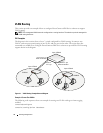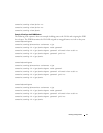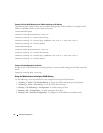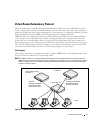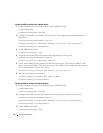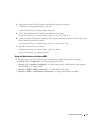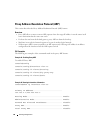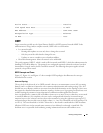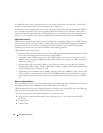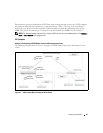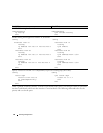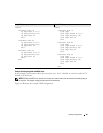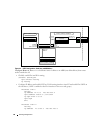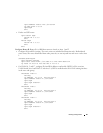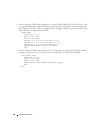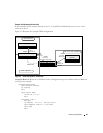
82 Routing Configuration
A
virtual link
can be used to connect an area to Area 0 when a direct link is not possible. A virtual link
traverses an area between the remote area and Area 0 (see Figure 4-5).
A
stub area
is an area that does not receive routes that were learned from a protocol other than OSPF or
were statically configured. These routes typically send traffic outside the AS. Therefore, routes from a
stub area to locations outside the AS use the default gateway. A virtual link cannot be configured across a
stub area. A
Not So Stubby Area
can import limited external routes only from a connected ASBR.
OSPF Routers and LSAs
OSPF routers keep track of the state of the various links they send data to. Routers share OSPF
link state
advertisements
(LSAs) with other routers. Various LSA types provide detailed information on a link for
sharing within an area or summary information for sharing outside an area. External LSAs provide
information on static routes or routes learned from other routing protocols.
OSPF defines various router types:
• Backbone routers have an interface in Area 0. They condense and summarize information about all the
areas in the AS and advertise this information on the backbone.
• Area border routers (ABRs) connect areas to the OSPF backbone (in the case of virtual links, the an
ABR may connect to another ABR that provides a direct connection to Area 0). An ABR is a member of
each area it connects to.
• Internal routers (IRs) route traffic within an area. When two routers in an area discover each other
through OSPF Hello messages, they are called OSPF neighbors. Neighbors share detailed information
on the topology of the area using local LSAs.
• Autonomous system boundary routers (ASBRs) connect to other ASes. ASBRs use other protocols such
as BGP or RIP to communicate outside the AS. The ASBR performs route redistribution; i.e., when it
learns routes from other protocols, it originates external LSAs that advertise those prefixes within the
AS.
Metrics and Route Selection
You can configure the metric type of external routes originated through route redistribution. The metric
type influences the routes computed by other OSPF routers in the domain.
OSPF determines the best route using the assigned cost and the type of the OSPF route. The following
order is used for choosing a route if more than one type of route exists:
1
Intra-area (the source and destination address are in the same area)
2
Inter-area (the source and destination are not in the same area, i.e., the route crosses the OSPF
backbone)
3
External Type 1
4
External Type 2



